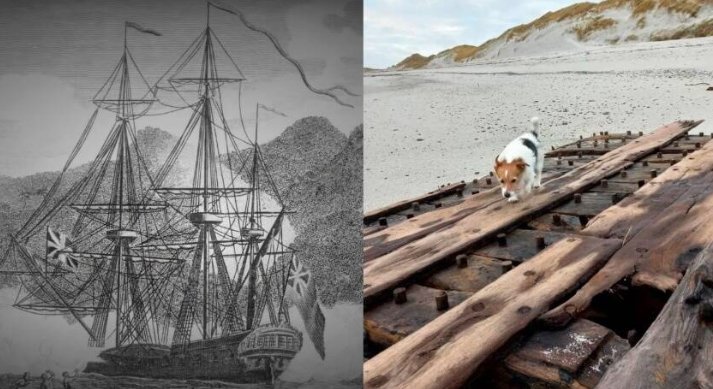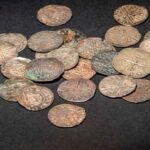SANDAY, ORKNEY — What began as an ordinary run along a windswept Scottish beach turned into a remarkable brush with history for one local schoolboy, who stumbled upon the wreck of a ship that once sailed for the British Royal Navy nearly three centuries ago.
The find — made in February 2024 after a violent winter storm battered Sanday, one of Orkney’s most remote islands — revealed the remains of a vessel that had lain hidden beneath the sand for over 200 years.
A Race Against the Tide
When the boy spotted the large section of timber jutting from the shoreline, the island’s tight-knit population of roughly 500 residents quickly mobilized. Farmers brought in tractors to haul the massive oak hull — weighing an estimated 12 tons — to safety before the sea reclaimed it.
“It was quite fun, and everyone pulled together,” said community researcher Sylvia Thorne, who helped coordinate the rescue. “There was this sense that we were holding a piece of history in our hands.”

From Naval Battles to Arctic Whaling
Initial examinations showed the wood dated back to the mid-1700s and originated from southern England — instantly ruling out non-British vessels. Historians then narrowed the list by excluding smaller ships and those built in other regions.
The breakthrough came when researchers linked the wreck to the Earl of Chatham, an Arctic whaling ship that sank in the North Sea in 1788. Before its life chasing whales, the vessel sailed under a different name — HMS Hind, a 24-gun Royal Navy frigate launched in 1749.
During its military service, HMS Hind took part in pivotal British sieges, including the capture of Louisbourg in 1758 and the Quebec campaign during the Seven Years’ War. It also served in the American Revolutionary War before being sold to private owners and refitted for whaling expeditions in the icy Arctic.
The Final Voyage
On April 29, 1788, while returning from the Arctic, the Earl of Chatham was caught in a fierce North Sea storm and went down off the Orkney coast. Over two centuries later, the ship’s oak bones resurfaced, offering a tangible link to Britain’s imperial and maritime past.
For Sanday’s residents, the wreck has become more than just a relic — it’s a community triumph, proof of the island’s ability to rally around a shared heritage.


















